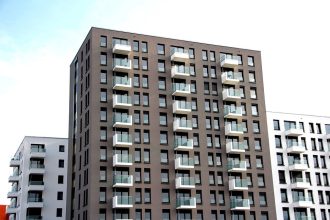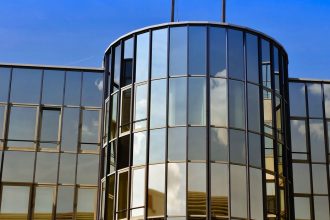Building Tomorrow: How Sustainable Urban Development Shapes Greener Cities
As urban population growth continues to escalate, the need for sustainable urban development has become more pressing than ever. Indeed, the cities of tomorrow will need to prioritize environmentally friendly practices, efficient resource management, and social equity to create livable spaces for all inhabitants. Sustainable urban development and sustainable real estate development are not merely trends, but essential frameworks for building greener cities that can withstand the challenges posed by climate change, resource scarcity, and urbanization.
The Principles of Sustainable Urban Development
Sustainable urban development encompasses a wide range of practices aimed at minimizing the environmental impact of cities while enhancing the quality of life for residents. This approach prioritizes:
- Resource Efficiency: Innovative use of materials, water, and energy to reduce waste and lower utility costs.
- Biodiversity Preservation: Incorporating green spaces, urban forests, and rooftop gardens to maintain ecosystem health and support local wildlife.
- Inclusive Planning: Ensuring that urban spaces cater to all demographics, including low-income populations, through mixed-income housing and accessible public transport options.
Sustainable Real Estate Development
Sustainable real estate development plays a pivotal role in building tomorrow’s cities. This involves integrating green building practices into the design, construction, and operation of residential, commercial, and mixed-use properties. Key practices include:
- Energy Efficiency: Utilizing energy-efficient windows, insulation, and HVAC systems to significantly reduce energy consumption.
- Water Management: Implementing rainwater harvesting systems, greywater recycling, and drought-resistant landscaping to conserve water.
- Material Selection: Choosing sustainable, locally sourced, or recycled materials minimizes environmental impact and supports local economies.
Innovative Practices in Green Building Design
Numerous initiatives across the globe exemplify the integration of innovative green building practices in urban development. One of the most ambitious frameworks aimed at revolutionizing the construction industry is The Living Building Challenge (LBC). Launched by the International Living Future Institute, the LBC promotes buildings that are not only energy and water independent but also celebrate their natural surroundings.
Core Principles of LBC Include:
- Place: Buildings should be sited carefully to respect the land and the local ecology.
- Water: Structures must collect and treat all water on site.
- Energy: Energy must be generated on-site through renewable sources.
- Health & Happiness: The design should enhance the well-being of inhabitants by providing natural light, fresh air, and connection to nature.
- Materials: The use of harmful chemicals and materials is strictly avoided.
Case Studies of Innovation in Sustainable Urban Development
-
Bullitt Center, Seattle, USA: Often dubbed the “greenest commercial building in the world,” the Bullitt Center achieves net-zero energy through its solar array and minimizes water usage with its rainwater harvesting system. It is a prime example of how a building can function as part of its ecosystem.
-
The Edge, Amsterdam, Netherlands: This office building is renowned for its sustainability and efficiency. Equipped with smart technology that optimizes energy use, The Edge harnesses solar power and employs rainwater harvesting. Additionally, its design encourages employee productivity by maximizing natural light and providing communal green spaces.
- Bosco Verticale, Milan, Italy: These residential towers integrate vertical forests, featuring thousands of trees planted on balconies, which help combat smog, provide insulation, and promote biodiversity. Bosco Verticale has redefined urban landscapes by transforming concrete jungles into vibrant ecosystems.
Challenges and Opportunities
While the principles of sustainable urban development are gaining traction, challenges remain. Urban planners must navigate zoning laws, funding limitations, and resistance from developers who may view green building practices as cost-prohibitive. However, innovative financing mechanisms such as green bonds, public-private partnerships, and government incentives can help overcome these obstacles.
Conclusion
Sustainable urban development is not just essential for the well-being of our environment; it is a fundamental necessity to create healthier, more equitable cities. By embracing practices like those advocated by the Living Building Challenge, and through innovative designs and technologies, we can forge a path toward a greener, more sustainable urban future. For cities to thrive in a rapidly changing world, stakeholders—from government officials and urban planners to architects and developers—must collaborate to transform visions of sustainability into reality. Building tomorrow’s cities today will not only enhance life quality but also pave the way for resilient communities equipped to face future challenges.







